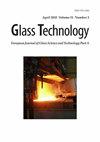致编辑的信:聚光太阳能(CS)热熔与基于光伏(PV)的电熔
IF 0.3
4区 材料科学
Q4 MATERIALS SCIENCE, CERAMICS
Glass Technology-European Journal of Glass Science and Technology Part a
Pub Date : 2017-10-01
DOI:10.13036/17533546.58.5.009
引用次数: 0
摘要
我们比较了两种基于太阳能的方法来为玻璃熔化提供过程热量,即聚光太阳能(CS)热熔化和基于光伏(PV)的电熔化。CS系统需要光伏备份,两种方法都需要额外的能量存储。这项调查的结果表明,PV-all电方法更有利,因为收集所需太阳能所需的土地面积要小得多,用于类似尺寸的玻璃生产能力。本文章由计算机程序翻译,如有差异,请以英文原文为准。
Letter to the Editor: Concentrated Solar (CS) thermal melting versus photovoltaic (PV) based electric melting
We compare two solar based methods for providing the process heat for glass melting namely concentrated solar (CS) thermal melting and photovoltaic (PV) based electric melting. The CS system requires PV back-up and both methods require additional energy storage. The results of this investigation suggest that the PV-all electric method is more favourable due to the substantially smaller area of land required for the collection of the required solar energy for similar size glass production capacities.
求助全文
通过发布文献求助,成功后即可免费获取论文全文。
去求助
来源期刊
CiteScore
0.30
自引率
0.00%
发文量
0
审稿时长
>12 weeks
期刊介绍:
The Journal of the Society of Glass Technology was published between 1917 and 1959. There were four or six issues per year depending on economic circumstances of the Society and the country. Each issue contains Proceedings, Transactions, Abstracts, News and Reviews, and Advertisements, all thesesections were numbered separately. The bound volumes collected these pages into separate sections, dropping the adverts. There is a list of Council members and Officers of the Society and earlier volumes also had lists of personal and company members.
JSGT was divided into Part A Glass Technology and Part B Physics and Chemistry of Glasses in 1960.

 求助内容:
求助内容: 应助结果提醒方式:
应助结果提醒方式:


